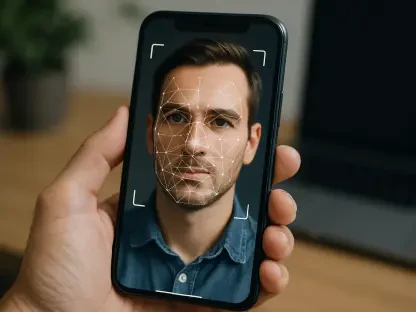Smartphones have become indispensable tools in daily life, seamlessly blending into routines with their endless capabilities, but a lesser-known reality lurks beneath their glossy screens. These devices do far more than facilitate communication or entertainment; they silently observe and analyze every interaction, from the rhythm of taps to the timing of messages. Without users ever disclosing personal details, a phone can construct a strikingly accurate profile, starting with something as fundamental as age. This process, often referred to as silent profiling, operates in the background, unnoticed by most, yet it holds profound implications for privacy and personal autonomy. What begins as mundane data collection transforms into a sophisticated demographic sketch, raising questions about how much control individuals retain over their digital identities. This article delves into the mechanisms behind this technology, explores the behavioral differences it exploits, and examines the dual-edged impact of such predictive power on society.
Unveiling the Mechanics of Silent Data Analysis
Smartphones are not just gadgets; they are intricate systems designed to monitor and interpret user behavior with remarkable precision. Every interaction—whether it’s the speed of typing, the frequency of app usage, or the duration of phone calls—becomes a data point for analysis. Advanced machine learning algorithms, trained on vast pools of behavioral information, can predict a user’s age group with accuracy rates reaching up to 70 percent. These systems identify patterns that are often invisible to the human eye, such as the frenetic app-switching of younger users compared to the more measured, focused habits of older individuals. What makes this process so striking is its invisibility; users remain unaware that their everyday actions are being distilled into detailed insights. This silent observation underscores a growing tension between technological innovation and the right to privacy, as personal traits are inferred without explicit permission or even awareness.
The sophistication of these predictive tools lies in their ability to integrate multiple behavioral signals for greater accuracy. For instance, the timing of calls, the length of text messages, and even scrolling habits are combined to refine age classifications. A younger user might exhibit rapid, short bursts of communication, while an older user may engage in longer, more deliberate exchanges. Machine learning models don’t just detect these differences; they contextualize them within broader demographic trends, creating a digital fingerprint unique to each person. This capability is a testament to how far data analysis has come, yet it also highlights a critical gap in transparency. Most individuals have no idea that such intimate details are being extracted from routine phone use, nor do they have a say in how this information might be applied. The implications of this silent data collection extend far beyond mere categorization, touching on fundamental issues of consent and control in the digital age.
Behavioral Signatures Across Generations
Distinct age groups interact with technology in ways that are as unique as their cultural contexts, and smartphones are adept at capturing these differences. Teenagers and young adults often navigate expansive social networks, darting between apps with quick, fragmented communications that reflect a fast-paced digital lifestyle. In contrast, middle-aged users tend to prioritize efficiency, focusing on specific tasks and maintaining tighter, more consistent contact circles. Older adults, meanwhile, frequently opt for extended phone conversations and engage with social platforms less often but with greater deliberation. These behavioral signatures are not random; they mirror generational attitudes toward technology, shaped by differing levels of familiarity and purpose. Smartphones, through their algorithms, decode these patterns effortlessly, turning everyday habits into a roadmap of demographic identity.
The ability to map such generational tendencies is both a technological achievement and a potential privacy concern. Predictive systems don’t merely observe actions like texting or calling; they infer the underlying motivations and social dynamics that drive them. For example, the high-frequency, multi-app engagement of younger users often signals a need for constant connectivity, while the more reserved digital interactions of older users may indicate a preference for meaningful, focused exchanges. This nuanced understanding allows algorithms to categorize individuals with startling accuracy, often without any direct input from the user. However, this also means that personal details are exposed through actions that seem inconsequential, leaving little room for anonymity. As these systems continue to refine their analyses, the line between helpful personalization and intrusive surveillance becomes increasingly blurred, challenging the balance between utility and ethical responsibility.
Weighing the Benefits Against Hidden Risks
Silent profiling offers a range of advantages that can enhance user experiences in meaningful ways. Personalized advertising, tailored app interfaces, and even healthcare tools customized to inferred age groups are just a few examples of how this technology can be applied positively. Consider the potential for emergency response systems to prioritize assistance based on a user’s likely needs, inferred from their digital behavior. Such innovations could streamline services and improve outcomes in critical situations. Additionally, content curation on social platforms becomes more relevant when aligned with a user’s demographic profile, creating a more engaging online environment. These benefits highlight the potential for silent profiling to transform how technology adapts to individual needs, making interactions more intuitive and efficient in an increasingly connected world.
Yet, the risks associated with this technology cast a long shadow over its promises. Companies can construct detailed “shadow profiles” containing sensitive information—age, likely income level, or even emotional states—without ever seeking user consent. These profiles influence everything from online advertisements to the content users are shown, often shaping decisions in ways that feel manipulative. Worse still, inaccuracies in predictions can lead to misclassifications with real-world consequences, such as inappropriate targeting or exclusion from certain services. The lack of transparency in how data is collected and used only deepens these concerns, as individuals remain unaware of the extent to which their digital lives are scrutinized. This hidden surveillance raises ethical questions about autonomy and fairness, urging a closer look at how such powerful tools are governed and whether users should have greater control over their inferred identities.
Reflecting on a Digital Double-Edged Sword
Looking back, the journey through the world of silent profiling revealed a technology that was both awe-inspiring and unsettling in its capabilities. Smartphones, once seen merely as tools for communication, proved to be sophisticated observers, decoding age and other personal traits through mundane interactions. The precision of machine learning algorithms in analyzing behavioral patterns was matched only by the invisibility of their operations, leaving users unaware of the detailed profiles being crafted in the background. Generational differences in digital habits provided the raw material for these predictions, while the dual nature of benefits and risks underscored a broader societal challenge. Moving forward, the focus must shift to actionable solutions—establishing stricter transparency standards, enhancing user consent mechanisms, and developing frameworks to mitigate errors in profiling. Only by addressing these issues head-on can the balance between technological advancement and personal privacy be restored, ensuring that innovation serves humanity without compromising individual rights.









